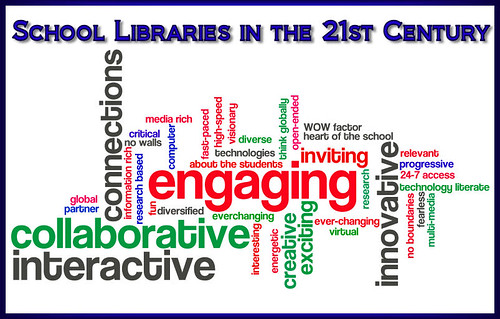I selected this video as part of a unit I did for a class assignment. It is a popular unit in second grade. Video I chose:
Likes:
A variety of videos for professional and personal use. There are some that are appropriate for use in the classroom. Turning the comment feature off is a helpful option, especially if you are uploading student projects. Embed code feature is good to use to bypass district filters.
Dislikes:
Some are very inappropriate. Some people leave very cruel comments. Some of the recommended videos (based on my previous views) are completely unrelated. You have to use a third party app to download videos (big hassle!) I also don't like the annoying ads
In terms of library websites, youtube can be used to:
promote new titles, events; hold contests
Wednesday, December 23, 2009
Method 5: Extra Credit
So far I'm liking Picasa more. It's automatically uploading my pics and i can view the individual folders; can be used with blogger; has a basic photo editor; in the google family...
Method 5
I like this image from flickr. It highlights current trends in school libraries. It embodies what today's librarians should focus on to stay relevant, vital, and important.
On a personal level, I would love to use flickr to backup my photos. Also to access them if i'm away from my home computer.
On a professional level, there are so many applications.
Scrapbooking assignments, highlighting displays, library events, electronic newsletters....
Saturday, December 19, 2009
Method 4
My top 3 feeds:
Grits
LITA
Tech.
I choose these feeds because they have topics I'm currently fascinated with. With the new 2.0 options these sources provide the background info I need in order to recommend sites to my teachers and staff.
I do see myself using google reader with these sites as well as the Houston Chronicle and CNN since I visit these sites on the daily basis.
I also have a netvibes account that I'm working on to offer a one-stop show of library 2.0 sources.
Grits
LITA
Tech.
I choose these feeds because they have topics I'm currently fascinated with. With the new 2.0 options these sources provide the background info I need in order to recommend sites to my teachers and staff.
I do see myself using google reader with these sites as well as the Houston Chronicle and CNN since I visit these sites on the daily basis.
I also have a netvibes account that I'm working on to offer a one-stop show of library 2.0 sources.
Sunday, December 13, 2009
Method 3
Method 3: Some jumping off points for your blog post might be: How do you feel about these tools and concepts? Do you see great benefits for use in libraries? Overall, would you say that you are more excited or more cautious/skeptical about cloud computing?
Cloud computing came in very handy yesterday....For some strange reason Microsoft Word wasn't functioning properly yesterday when I had my last assignment due for a UNT class. Documents wouldn't open properly or save. Luckily I've been using dropbox and my husband has Word on his laptop. So I was able to save what i've done all semester to dropbox and finish on his (slow and NOT Pink) laptop. I've used google docs in the creation of a glogster page: http://bonnerlibary.edu.glogster.com/?
Using google docs for this project didn't require teachers to have to open or save any downloads. I see many numerous benefits to using these apps in libraries: online availability collaboration opportunities I am very excited about cloud computing. It further avails us to working together not in just small groups in the classroom but across the globe.
Cloud computing came in very handy yesterday....For some strange reason Microsoft Word wasn't functioning properly yesterday when I had my last assignment due for a UNT class. Documents wouldn't open properly or save. Luckily I've been using dropbox and my husband has Word on his laptop. So I was able to save what i've done all semester to dropbox and finish on his (slow and NOT Pink) laptop. I've used google docs in the creation of a glogster page: http://bonnerlibary.edu.glogster.com/?
Using google docs for this project didn't require teachers to have to open or save any downloads. I see many numerous benefits to using these apps in libraries: online availability collaboration opportunities I am very excited about cloud computing. It further avails us to working together not in just small groups in the classroom but across the globe.
Methods 1 and 2
As Abram mentions, I see Web 2.0 and Library 2.0 as increased interactivity. Web 1.0 provides us with information we need for work, academic, social, and personal needs. Web 2.0 invites us to the party where we can create information that satisfies each of these needs as well as improved productivity in each aspect of our lives. Learning more about Library 2.0 situate us in a unique position to positively impact student achievement, show teachers how to integrate technology, and learn about tools that can streamline their daily tasks.
In terms of my library, Web 2.0 and Library 2.0 allows for more social interaction for students, educators and peers to collaborate on assignments, projects, lessons, and learning. In terms of libraries in general, they represent a major cultural shift for many people. Libraries must transform to meet the needs of their patrons in order to stay relevant and viable.
Labels:
library_2.0,
Texas two-step,
web_2.0
